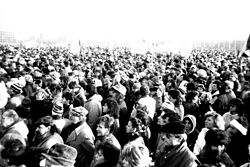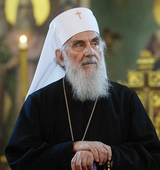Radushia
Sotirian Republic of Radushia Сацірскі Радауская Чува́шская Sacirski Radauskaja Respublika | |
|---|---|
Motto: Адзінства, Вера, Дысцыпліна "Adzinstva, Viera, Dyscyplina" Unity, Faith, Discipline | |
Anthem: Бог справедливости Bog Spravedlivosti God of Justice | |
| Capital and | Chrivotava |
| Official languages | Tavorstri |
| Recognised regional languages | Narodyn Volynian Belonarodyn |
| Ethnic groups (2016) | 88% Tavostri 6.3% Narozalic 3.1% Belonarodyn 1.9% Digoran |
| Religion | Epismalist Christianity |
| Government | Unitary dominant party theocratic parliamentary republic subject to a Supreme Patriarch |
| Macarius II | |
| Raman Yarmoshyn | |
| Tatsyana Holubeva | |
| Legislature | Great Assembly of State |
| Independence from Narozalica | |
• Declaration of independence | 3 August 1979 |
• Treaty of Boltovo | 1 May 1980 |
• Constitution of Saint Mikola | 6 July 1981 |
• Current constitution | 24 September 1992 |
| Area | |
• Total | 8,646 km2 (3,338 sq mi) |
| Population | |
• 2019 estimate | |
• 2016 census | 4,102,147 |
• Density | 485.04/km2 (1,256.2/sq mi) |
| GDP (PPP) | 2019 estimate |
• Total | |
• Per capita | |
| GDP (nominal) | 2019 estimate |
• Total | |
• Per capita | |
| Gini | 33.4 medium |
| HDI | 0.777 high |
| Currency | Radushian Zolota (RUZ) |
| Driving side | right |
| Internet TLD | .rd |
Radushia (Чува́шская; Radushiya), officially the Sotirian Republic of Radushia (Сацірскі Радауская Чува́уская; Sacirski Respublika Radushiya) is a landlocked country located in western Euclea, bordering Poliania to the west, Narozalica to the north, XX to the east and Lake XXX to the south. A small nation, it has a total area of 4,646 km² (3,338 sq mi) and a population of 4.91 million. It's capital is Detkovo and its largest city is Boltovo.
History...
History...
Today, Radushia is a member of the Community of Nations, ITO and the GIFA. Radushia is also a member of Samorspi. Despite it's size, Radushia holds significant cultural and religious influence, especially among nations of the Epistmalist Catholic Church. Radushia's economic growth and development has improved in recent years, with continued rise in living standards and incomes.
History
Pre-history
Ancient
Principality of Radushia (1085-1466)
Kingdom of Radushia (1466-1721)
Narozalic Empire (1721-1861)
Narozalic Republic (1861-1981)
TBD - loyal province.
TBD - loyal province.
TBD - loyal province.
TBD - loyal province - Radushian brigades during the GW...
Path to independence
Throughout the Great War and its aftermath, Radushia was gripped in a revival of national identity and nationalism. Driven by myths from the war, the rise of domestic cultural booms and greater independence of the Radushian Episemalist Church, by the 1970s, an overwhelming majority of Radushians identified themselves as such over Narozalic for the first time since the Euclean Spring over two-centuries prior. During the 1950s, a series of civil society groups were formed dedicated to promoting Radushian national identity and culture, virtually all did so with generous praise of Narozalic culture.
In 1966, the Radushian Society for Peace and Freedom (Радушскае грамадства за мір і свабоду; Radušskaje Hramadstva za Mir i Svabodu; RHMS) was formed by a group of leading state-level politicians, academics and artists. The official objective of the RHMS was to “promote the cause of Radushian identity, independence and peaceful co-existence with all nations. One of the founding members was Alexzander Nivitsky, a prominent politician from Chrivotava. Support for the RHMS was “stagnantly low” throughout the 1960s and
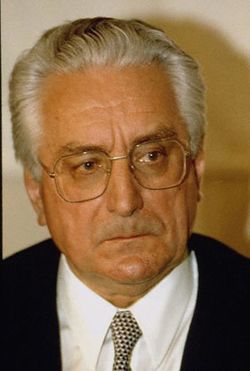
early 1970s. However, the tide would turn with the rising political tensions in Samistopol over the growing authoritarianism of President Gardos.
1974, Nivitsky and his Liberty Party (Партыі Cвабоды; Partyi Svabody) won the gubernational election in Radushia, with Nivitsky becoming Chief Minister of the Radushian state. The PS was in an electoral alliance with virtually every other Radushian nationalist party, under the umbrella of the RHMS. His promises for “careful, civil, honest and just discussions for independence” won the alliance over 68% of the popular vote. Nivitsky’s previous tenure in the federal upper-house (Vojnaskul) allowed him to establish key ties with leading Narozalic politicians, including many of the anti-Gardos faction. Between 1975 and 1977, Nivitsky as Chief Minister would make regular speeches around the Radushian desire to “be free of the chaos in Samistopol, free of the choice between a dictator and war.” Despite his regular outbursts, behind the scenes Nivitsky attempted to play off-both sides, simultaneously to protect his people, but also for self-preservation.
In the months leading up to the Second Narozalic Civil War, Nivitsky and his state administration secretly began to prepare for a unilateral declaration of independence, driven in part by the significant pressure from the RMHS to avoid seeing Radushian forces deployed in support of either side. The political tensions in Samistopol also permitted the rise of Radushian national identity, in the words of Nivitsky himself, “we have found that the crisis in Samistopol has arisen in us a consciousness, that we have no connection to either side, that we have a third option between the two – going our own way, free from such crises.” The outbreak of civil war in XX 1980, saw mass protests erupt in Chrivotava, with thousands demanding Nivitsky’s opposition to deployment of forces. His failure to declare his support either the constitutionalists or centralist factions gave Nivitsky breathing space with regard to the popular resentment.
On XX 1978, Nivitsky declared a state of emergency in Radushia, in order to grant himself the authority to deploy provincial militia forces in defence of the state. Federal forces based in Radushia were swiftly deployed by loyalists, though they faced significant shortages of manpower due to the desertion of Radushians from their ranks. By the Spring of 1979, the civil war was in full-swing, with much of the fighting concentrated in Narozalica itself. Despite the pressure to utilise the UDI, Nivitsky instead opted to pursue independence through a referendum in hopes that it would garner the recognition of the international community, providing an independent Radushia protection from restorationist plans of the Narozalic government.
On 3 August 1979, the Nivitsky administration held the independence referendum which passed with 88% for breaking away from the Narozalic Republic as an independent sovereign state. Turnout was recorded as 92%, with the RMHS playing a pivotal role in the pro-independence camp. To further ensure international safeguards, Nivitsky invited monitors from the International Council for Democracy and the Community of Nations to observe the election. On 4 August, Nivitsky officially decared Radushia an “independent state, sovereign in all matters and free to chart its own destiny.” The provisional militia formed out of the former state-level force was organised and moved to seize vital military infrastructure from the Narozalic state. Gripped by civil war, there was only rhetoric condemnation from both sides. Over the course of a week, Radushia would be officially recognised by various major powers and Euclean states, with Poliania being the first Euclean state to recognise Radushia on 5 August. On 10 August, Nivitsky proclaimed the formation of a provisional government and a National Convention to produce a written constitution. Nivitsky was confirmed as Interim President by the hastily formed National Convention.
Independence and civil conflict (1981-1984)
Following the country’s swift and peaceful transition to independence, it became rapidly clear that unity and purpose during the 1978-79 years was truly momentary, as various factions within the Radushian Society for Peace and Freedom began to agitate over their respective ideals for an independent Radushia. These factions generally fell along ideological lines, with influence split between the Radushian Worker’s Party (left-wing), the Patriotic Freedom Front (centrist-liberal) and the Liberty Party, led by Alexander Nivitsky on the right.
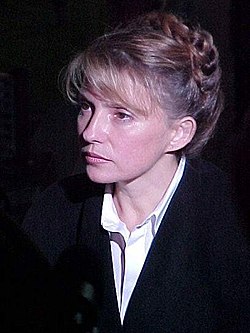
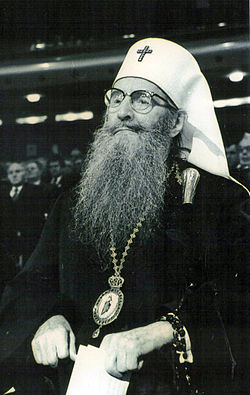
Disagreements over the future system of government swiftly escalated in power struggles between the various factions. With the convention distracted, Nivitsky began amassing a vast network of patrons in key areas, including the provisional court system, national police and gendarmerie. His efforts to assume de-facto dominance over the nascent Radushian Defence Force repeatedly failed owing to the military’s long historic insular nature from government as the federal defence force. In early October, having secured control over the police, Nivitsky orchestrated the shuttering and ban of the Radushian Worker’s Party. Its leader, Kastuś Kalinoŭski was arrested and was later found dead on October 6, provoking mass demonstrations against Nivitsky. Prominent rival of Nivitsky within his Liberty Party, Tatsyana Halubeva split and took 13 deputies with her to form the All-Radushian Sotirian Party.

Throughout October, the mass demonstrations and protests were met with heavy-handed police tactics, further alienating the masses from Navitsky. On October 27, the Patriarch of Radushia, Michal IV intervened, condemning the violence and Navitsky’s “blatant pursuit of dictatorship.” On October 30, rumours that Navitsky sought to close down the National Convention and rule by decree reached the masses in Chrivotava, leading to thousands marching on the Marmurovy Palace. The rumours also led to the declaration of the RDF’s support for the people, who deployed forces to the capital to remove Navitsky from power. Fierce gun clashes erupted in central Chrivotava between October 31 and November 1, which allowed Nivitsky and his family to flee for West Miersa. With their leader gone, his loyalists in the capital surrendered to the RDF, who appointed Halubeva as Interim President.
Halubeva’s interim government reorganised the National Convention to include parties and civil society groups. Citing the dangers of would-be strongmen, and noting the unrivalled influence, support and trust of the Episemalist Church, proposed a “civic-church constitution” with the Patriarch of Radushia serving as a ceremonial head of state. This was backed by her party, the RDF and numerous centrist groups. On November 28, the new constitution was produced and put to referendum, duly passing 88% in favour on December 10. Elections held the same day saw the ARSP and Halubeva victorious with a strong majority in the new unicameral parliament. On December 11, Patriarch Michal IV and Halubeva assumed the offices of Supreme Patriarch and Chief Minister respectively. Despite the success, the chaos and economic crisis gripping the country had unleashed a mass emigration of Radushians for Poliania and parts of Narozalica, an outward flow of talent that would not be halted until the 2000s.
Digoran War (1982-1984)
Mostly unbeknownst to the various factions in Chrivotava, in the south-west regions of the country, ethnic strife was escalating into outright street violence. Long-time tensions between the Tavostri majority and Digoran minority over farmland and resources. Adding to the tension was the numerous Digoran elites, Nivitsky had appointed to key positions to shore up his position, many ethnic Tavostri saw the Digoran elite as enablers for a dictator in exchange for oversized influence and resources.
Throughout the crisis over Nivitsky’s power-grab, the tensions in south-western Radushia, focused in Solomyn County, began to escalate in tit-for-tat attacks. On October 10, a family of four Digorans were killed in their homes by a group dubbed the “Army of Saint Michael.” This was followed by a series of similar attacks that left a further 16 Digorans dead over the course of two weeks. In response on October 26, eight Tavostri men were killed in a gun-attack on a popular bar in Solomyn city. The attack resulted in what was widely described as a “pogrom”, with Digoran businesses beign ransacked and torched, while the homes of Digorans were looted and the inhabitants killed or brutalised. An estimated 65 Digorans were killed in the Solomyn Massacre. The massacre mobilised the entire Digoran population of Solomyn, where towns they constituted the majority began harassing or evicting ethnic Tavostris. In turn, the authorities in Solomyn, more often acting without communication or order from Chrivotovo amassed armed groups to retake villages where Tavostris had been evicted, meeting armed Digoran militia. The civil war in Narozalica permitted the country to become awash with weapons and ammunition, aiding the Digoran armed effort considerably. By December over 300 people had been killed and 3,500 made homeless by the violence.
Following the stabilisation of government in early December, the central government becoming aware of the crisis immediately began to fear a Nivitsky-plot through the Digoran minority. By the time Chief Minister Halubeva announced the “Anti-Instability Operation”, the Digoran militias had united into forming the Dzune Lashe Brigades, named after the six-year old boy killed in the first attack on October 10. The brigades were headed by Narich Chemso, who declared the DLB’s aim to be a “free and independent Tuguzlia.” The DLBs had succeeded in capturing vast swathes of Solomyn county, including the town of Sviataja Nasta. On December 14, Halubeva authorised the deployment of 5,600 soldiers to Solomyn to restore law and order.
On January 2, the RDF’s units arrived in Solomyn and began a series of small offensives against DLB positions, officially sparking the Digoran War. The DLB restored to guerrilla warfare, harassing RDF units in rural areas, while fighting bitterly with house-to-house combat in urban areas. By February a further 10,000 RDF soldiers were deployed to Solomyn, including 3,400 volunteers militia organised into the “Army of Blessed Radushia.” The Radushian Episemalist Church blessed the operation, with Supreme Patriarch Michal IV describing the effort as a “battle between the good in this world and the wickedness of criminality.” The RDF’s reliance on religiously inspired militias swiftly resulted in sporadic if excessive violence against ethnic Digorans. Between January and May 1981, the RDF struggled to retake key towns, being continuously harassed in rural areas. As a result, the RDF dispatched the ABR to attack rural villages and farms to flush out ALB units, the tactics used were widely condemned in some Radushian quarters as excessive, with mass executions, the burning of properties and hundreds of cases of war rape being inflicted on Digoran women.
By Christmas of 1981, the RDF had retaken Sviataja Nasta, after three-week siege that left an estimated 2,800 civilians dead or injured. The capture of Sviataja Nast left the DLB without an urban stronghold, being forced in the foothills and mountains of south-western Solomyn. Forced into hiding among the mountains, the DLB would conduct raids into the lowlands for supplies and food, harassing RDF forces and recruiting new fighters where possible. In response, the ABR militia conducted a series of raids on Digoran villages throughout Christmas, leaving over 1,000 civilians dead, in what became known as the Black Christmas. The raids succeeding in subduing the Digoran civilians remaining in Solomyn – by now, over 130,000 or roughly 20% of the population had fled Radushia. Beginning in the spring of 1982, the RDF besieged the mountains, hoping to starve out the DLB, which began to crumble under the weight of starvation and the terrain.
The war would be declared over on May 10 1982, with the surrender over 600 fighters, followed by the capture and execution of Narich Chemso. The two-year conflict had left an estimated 26,500 people dead and displaced close to 400,000 people. The ethnic composition of Solomyn swung into the favour of the Tavostri majority, with the Digorans coming to constitute the smallest minority in Radushia.
Modern (1984-present)
Geography
Government and politics
According to the 1992 constitution, Radushia is a unitary theocratic parliamentary republic, subject to the authority of the Supreme Patriarch, who is the head of state and holds several executive powers. In addition to being the commander in chief of the armed forces, the Supreme Patriarch has the procedural duty of appointing the Chief Minister with the consent of the parliament, and has some influence on social policy. Marcarius II is the current Supreme Patriarch, while Raman Yarmoshyn of the All-Radushian Sotirian Party is the current Chief Minister. Many commentators also classify Radushia as a dominant party state, owing to the All-Radushian Sotirian Party winning every general election since 1981. However, Radushia is one of the highest ranking countries in Western Euclea for electoral standards.
The gvernment (Urada) is composed of the chief minister and cabinet ministers. The Government is responsible for proposing legislation and a budget, executing the laws, and guiding the foreign and internal policies.
The Great Assembly of State (Vialiki Asamblieja Dziaržavy) is a unicameral legislative body. The Great Assembly has the power to enact laws, approve the budget, schedule parliamentary elections, reccommend the appointment or dismissal of the Chief Minister and other ministers, declare war, and ratify international treaties and agreements. It is composed of 250 proportionally elected members who serve four-year terms.
Supreme Patriarch
The Supreme Patriarch, who assumes the office upon becoming Patriarch of the Radushian Epistmalist Church, is afforded several executive powers, yet shares many commonalities with ceremonial heads of states elsewhere. The Supreme Patriarch is granted the power to appoint and dismiss the Chief Minister and cabinet ministers, dissolve the Great Assembly and possesses a veto on all legislation (though this has been rarely used) which can be overturned with a two-thirds majority in the legislature. The Supreme Patriarch also has the responsibility of promulgation, with all legislature requiring his signature to enter law. The position is held for life in parallel to its religious counter-part.
One widely accepted feature of the office is the immense influence it holds over Radushian society, where comments and statements by the incumbent are regularly viewed as sacrosanct. As such, the Supreme Patriarch is able to influence the country socially without having to rely on legislation or law. This has been praised and criticised in equal measure due to the lack of accountability.
Role of the Radushian Epistmalist Church
Administrative divisions
Foreign relations
Armed Forces
Law
Economy
Demographics
| Historical population | ||
|---|---|---|
| Year | Pop. | ±% |
| 1956 | 2,974,122 | — |
| 1966 | 3,535,140 | +18.9% |
| 1976 | 4,416,898 | +24.9% |
| 1986 | 4,400,024 | −0.4% |
| 1996 | 4,225,871 | −4.0% |
| 2006 | 4,008,715 | −5.1% |
| 2016 | 4,193,694 | +4.6% |
| Source: Narozalic Census (1956-1976) Radushian State Census (1986-) | ||
Ethnic groups
Language
Religion

Healthcare
Education

Education in Radushia is split roughly equally between state-run and church-run institutions. Church schools tend to be of higher quality in teaching, learning content and are widely seen as more prestigious than state-run institutions. However, criticisms exist in that Church-shcools operate beyond government oversight and have little accountability. Anti-government critics have argued that church schools in Radushia are designed to "entrench support for the theocratic system, over preparing students for careers."
Urbanisation
Chirvotava, the nation's capital and largest city, was home to 1,117,900 residents in 2018, representing 26.65% of the national population. Ottseda, with a population of 181,000, is the second-largest city and is located on the shores of Lake XXX. Other large cities are Svaryn (165,100), Sviaty Michal (118,400), Sviaty Mikola (89,800) and Aleksandrina (78,300).
Largest cities or towns in Radushia
NBS (2019) | |||||||||
|---|---|---|---|---|---|---|---|---|---|
| Rank | County | Pop. | |||||||
 Chrivotava  Ottseda |
1 | Chrivotava | Chrivotava | 1,117,900 |  Svaryn  Sviaty Michal | ||||
| 2 | Ottseda | Sviokrava | 181,024 | ||||||
| 3 | Svaryn | Kvatory | 165,137 | ||||||
| 4 | Sviaty Michal | Sviaty Michal | 118,444 | ||||||
| 5 | Sviaty Mikola | Sviaty Mikola | 89,800 | ||||||
| 6 | Aleksandrina | Vidamlya | 78,365 | ||||||
| 7 | Harbacha | Harbacha | 61,364 | ||||||
| 8 | Solomyn | Solomyn | 51,701 | ||||||
| 9 | Novaya Antonovka | Sviaty Paviel | 50,988 | ||||||
| 10 | Staraya Vodva | Sviaty Džordž | 47,532 | ||||||


